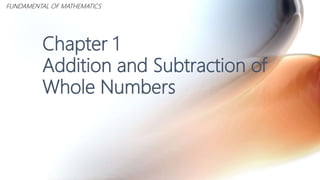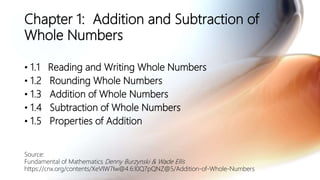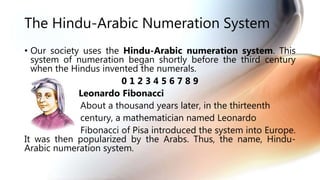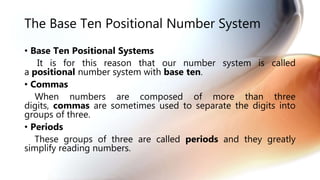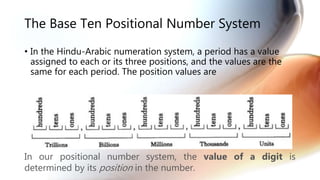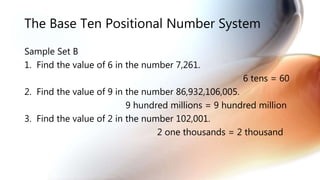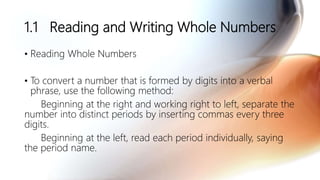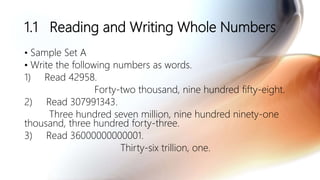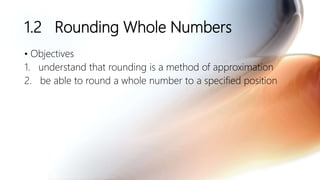The document is a comprehensive overview of addition and subtraction of whole numbers, covering concepts such as reading, writing, and rounding whole numbers, as well as their properties and visual representation. It explains the Hindu-Arabic numeration system, the significance of digits, and methods for graphing and approximating whole numbers. Exercises are provided to reinforce understanding of these mathematical fundamentals.
